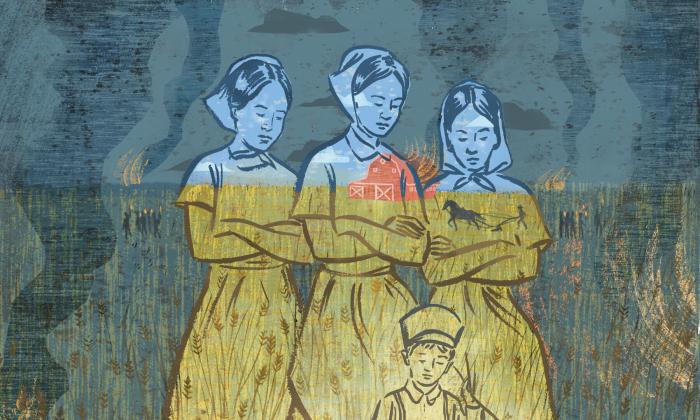
The Hutterites are a German-speaking religious group. Their branch of Christianity began in Europe around the 1500s. From the start, the Hutterites had an unusual way of living. They wore only plain clothes. And they lived in large groups off by themselves. They also did not believe in private property. Instead, they shared everything. And the Hutterites were pacifists—they refused to take up arms during wartime.
For 300 years, Hutterites faced hatred and bigotry in Europe. That is because some other people disliked their beliefs. In the 1870s, several Hutterite groups came to the United States. Like many immigrants coming at that time, the Hutterites sought religious freedom. Many of them settled in South Dakota and Montana. The Hutterites found the freedom they wanted. But they still faced hatred from people who found them strange.
Even so, the Hutterites did well until 1914, when war began in Europe. The United States joined World War I against Germany in 1917. Many Americans back home disliked anything German. They became angry at the Hutterites because they spoke German among themselves. Also, Hutterite young men refused to become U.S. soldiers. They did not believe in fighting. Many people believed that Hutterites favored Germany over the United States in the war.
Some people who lived near the Hutterites began to harass them. They stole from Hutterite herds. They vandalized Hutterite farms. Some towns passed new laws aimed at the Hutterites. These laws forbade people to speak German on the telephone or at school. Military service became mandatory for all young men who were physically fit. Since service was required, Hutterites sent their young men to military training camps. But Hutterite men held tightly to their pacifist beliefs. They refused to obey military orders or wear uniforms.
Some people believed that the Hutterites were cowards, not pacifists. As a result, soldiers treated the Hutterite men terribly. They were dragged by their hair. They were beaten. They were chased by motorcycles until they dropped from being so tired. A few Hutterite men were sent to prison for not obeying military orders. Two of them died because they were so badly treated.
The state of South Dakota also harassed the Hutterites. A special committee declared that they were “un-American.” It said that the Hutterite settlements, or “colonies,” should be banned. This forced the Hutterites to move. Most Hutterites left South Dakota and settled in Canada. Tensions did not ease until after the war. Years later, Hutterites once again set up new colonies in South Dakota.
Today, most Hutterites live in western Canada and the northern United States. Many outsiders still find Hutterite ways strange. Growing up Hutterite means that you have few personal possessions and little privacy. Everyone lives together and works hard. Yet all Hutterites are taken care of and made to feel like they belong. That lifestyle clearly appeals to many Hutterite young people. The Hutterites do not encourage outsiders to join. Even so, their numbers continue to grow.